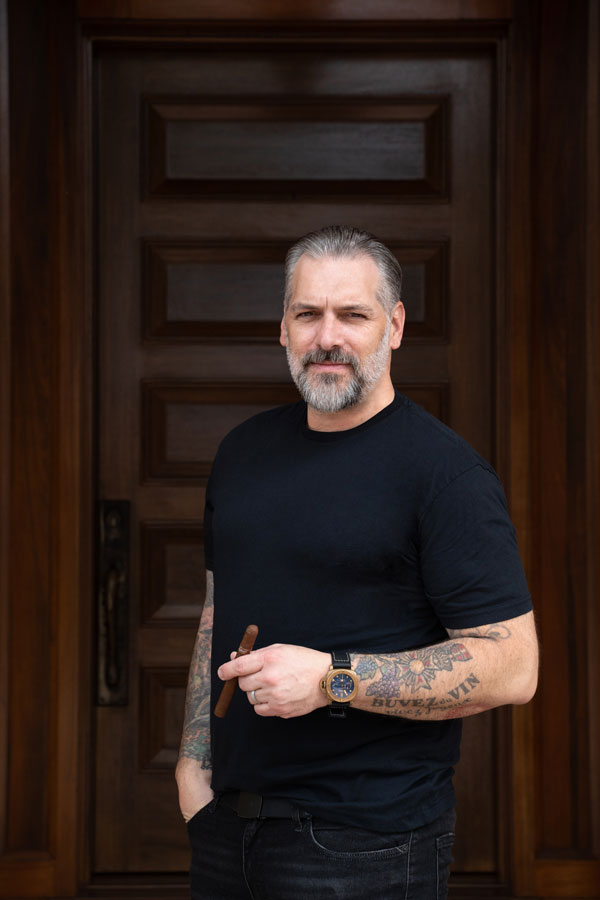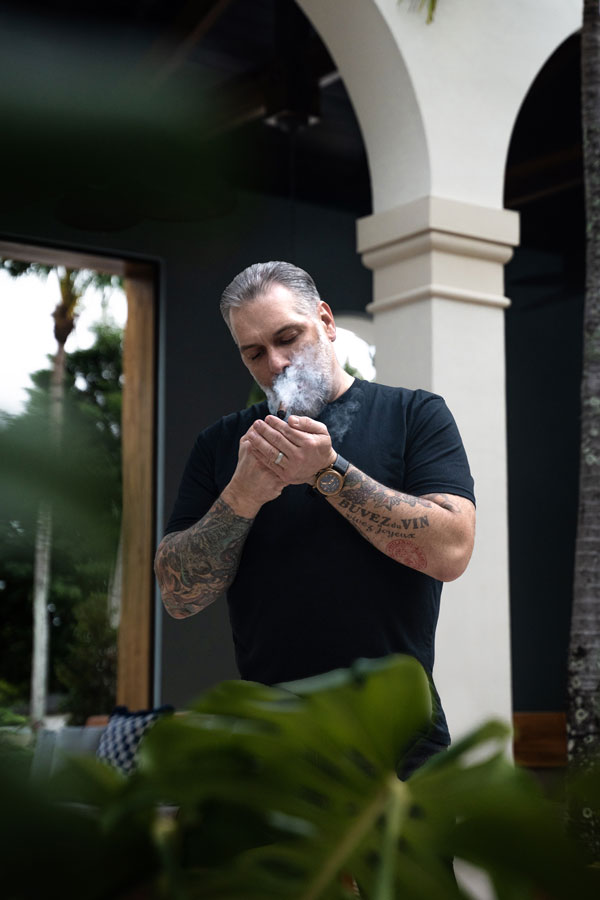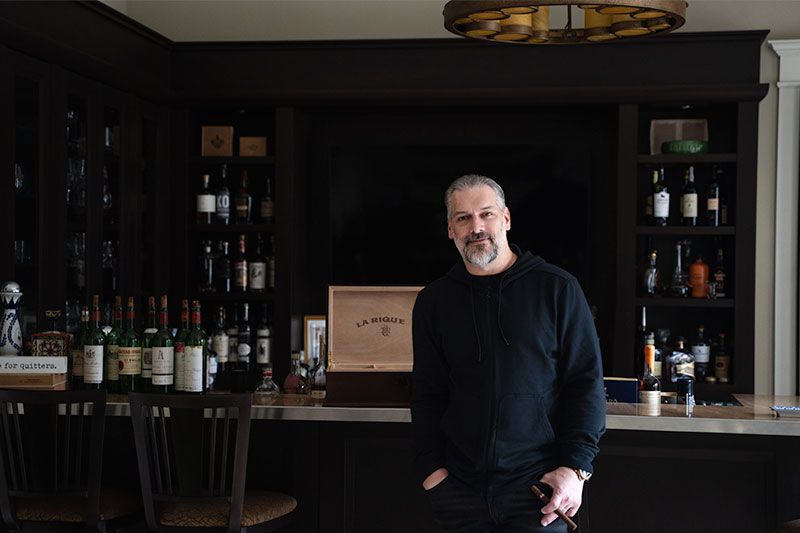We caught up with Pete Johnson, creator of Tatuaje Cigars, blender extraordinaire and serial entrepreneur, to talk about the brand’s evolution, find out what’s new from Tatuaje, and ask what to expect from him at this year’s PCA Convention and Trade Show this coming March.
PCA: In case some of our readers just emerged from a 20-year hibernation, let’s review briefly your ascent into the cigar industry. Did you segue into tobacco from the wine industry?
Pete Johnson: I was never in the wine industry. That’s a real misconception. I’ve always been in cigars, and then there was a brief period of time where I was going to Bordeaux a lot, and doing some wines over there. The only pivot I made was from the music industry to the cigar industry.
Let’s discuss what’s new from Tatuaje for 2024. You’re releasing Capa Especial, a variation on your 10th Anniversary cigar. Will it be at the show?
No, we’re actually shipping it next week. We do these wrapper presentations on different cigars that are staples of our portfolio, just to show people how much a wrapper will make a cigar. I think it’s important for the consumer to be educated.
At the trade show we’ll be releasing the 2015 and 2018 Cojonu, normally in Habano, in a Broadleaf wrapper. Those will be a part of the portfolio, available on a regular basis. The Capa Especial is a limited production. We’re also adding San Andrés and Corojo to the 2012 Cojonu, which is one of our most popular sizes.
Will there be a new PCA Exclusive for 2024?
I don’t think I’ll have something to show at this year’s event, because we’re releasing 2023’s at the end of February. The 2024, we won’t announce until probably later this year, for release early next year.
You celebrated your 20th anniversary last year. To what do you attribute Tatuaje’s long success?
Good cigars. It has nothing to do with me.
Didn’t you work on the blends?
Yeah, but I still have to rely on people to put them together. I could come up with the best blend in one cigar, and if they don’t know how to do it every day and they don’t have the tobacco to do it with every day I’m not going to get the same result. I think the consistency part really helps, and obviously the work that the Garcias have done over the years to make themselves more vertically integrated. The part that people understood what I thought was a good cigar is the bonus, so that’s helped too.

When Tatuaje launched, it was considered a boutique brand. Do you feel Tatuaje is still boutique today? What is your definition of a boutique cigar brand?
I don’t know what the definition is anymore. I think that Tatuaje as a brand, visually, people think it’s bigger than it really is. Maybe it’s that they see me a lot, and they see the ratings and they probably have this perception that we’re this giant company. I had a friend come through the factory in Miami the other day, and he’s like “Is this it?” (laughs), and I said yeah. I kind of laughed because people are always chasing the limited editions from Nicaragua, but the limited production from Miami is vastly more limited. I would consider the Miami factory a boutique factory.
If you were able to go back to the beginning, would you do anything differently?
My second year of the Monsters I had this great idea to make the inside of Dracula’s box look like a coffin, to look like red velvet, so I had the box maker paint the inside of the box. I would never do that again.
Which cigar makers and brands inspired you early on, and which do now?
All of the old guard. When I grew up in the industry, the Fuente family, the Padron family, Ernesto Carrillo, Litto Gomez, Robby Levin from Ashton, all these people were kind of my mentors. They inspired me to be more involved in the industry, and ultimately I sit on a board of directors for the CRA with most of these people. The person I didn’t know then who inspires me the most now has got to be Pepin [Jose Garcia of My Father Cigars]. He and his son Jaime, who is the driving force of everything, I look up to people like that, I appreciate their passing on the information and willingness to teach.
There’s a few younger people in the industry who have started brands and are doing well. One guy, Ian Reith from Dapper Cigars, he seems to understand cigars really well. He also seems to understand how to navigate the industry well. I believe he’s here for the right reasons. I like that these younger guys are willing to be involved in the advocacy part of the business, because it’s important that it keeps on being passed down.

Talk about Tatuaje’s relationship with My Father Cigars.
Well, I was their first client, and I’m their most loyal client. But we run very separate businesses. We did a collaboration at the trade show last year called La Union. It’s actually going to release around the PCA trade show this year. But I don’t get involved in their business, because it’s not my business. We have different business models, and our styles of cigars are very different. The only time I get involved is when they ask me to be involved.
What was your first trade show like?
My very first show was as a retailer, in 1995 in Orlando. It was like a fantasy world. I was looking around for things people didn’t have. I came back with Padron and Puros Indios, two of the biggest finds of that year.
As a vendor, it was 2003 in Nashville. I actually borrowed space from Cyril Brizard. He had a cabinet that he wrapped in leather and I put my cigars inside. I would walk around the floor and if I saw a friend from the industry I would ask them to try one of my cigars. Every now and then I’d get a call saying come back to the booth, someone wants to ask about your cigars. I came home with five accounts.
You’re known for your advocacy for the industry and your efforts to fight regulation and legislation. Do you feel this engagement is important for your business?
I think it’s important for all of us to be involved in some way, because if we’re not together, we’re going to potentially fail together. I want to see this industry last a long time. I want to make sure that the industry is healthy for the next generation.
– Photography by Adam Friedman. Story by Larry Wagner.
This story first appeared in PCA24 Attendee Guide. Current members of PCA received a copy in the mail; additional copies available at the trade show.

